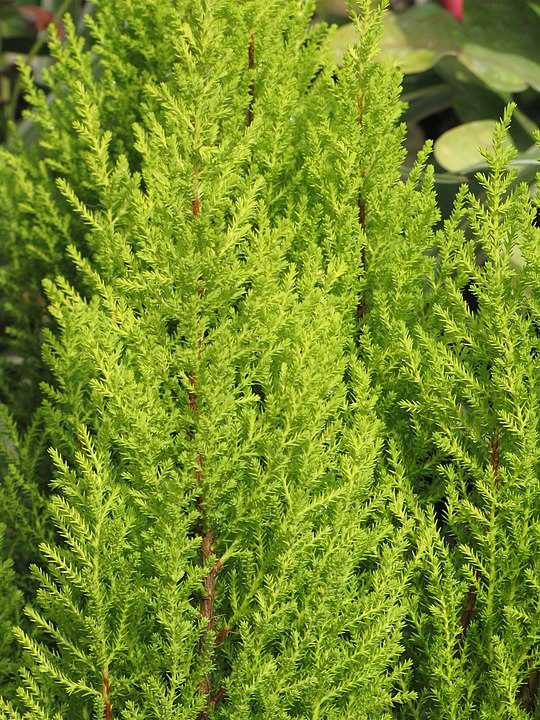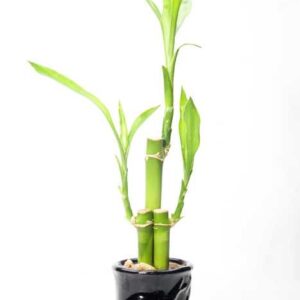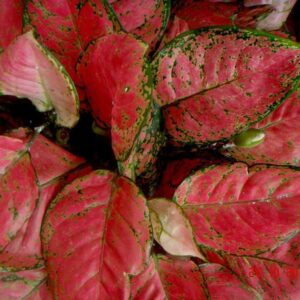Introduction
The Golden Cypress plant, scientifically known as Cupressus macrocarpa ‘Goldcrest’ is a popular cultivar of the Monterey Cypress tree. This coniferous evergreen can reach heights of 6-8 meters and has a columnar shape with bright golden-yellow foliage.
The soft, fragrant leaves are scale-like and overlap, giving the tree a feathery appearance. The brownish-grey bark has a fibrous texture. Its dense growth and tolerance to pruning make it a favored ornamental or hedging plant in gardens and landscapes.
For a stunning garden, consider pairing your Golden Cypress plant with a Hibiscus plant or a Pink Syngonium plant. Both of these plants have vibrant, showy blooms that will contrast beautifully with the Golden Cypress’s yellow foliage.
Click on the headings to read more!
Benefits
The Golden Cypress plant offers several benefits, including:
Ornamental value:
The plant’s bright golden-yellow foliage makes it a striking addition to gardens and landscapes. Its columnar shape also adds architectural interest.
Fragrance:
The leaves of the Golden Cyprus plant emit a pleasant fragrance that can freshen the air in the surrounding area.
Privacy and screening:
The dense growth habit of this plant makes it an effective hedging plant for creating privacy and screening.
Tolerance to pruning:
The plant is tolerant of pruning, which makes it easy to maintain the desired shape and size.
Evergreen:
The Golden Cyprus plant is an evergreen, which means it retains its foliage throughout the year, providing year-round color and interest.
Low-maintenance:
The Golden Cyprus plant is known for its low-maintenance qualities and ability to thrive in a variety of soil types and conditions.
Vastu Guidelines
In Vastu Shastra, a traditional Hindu system of architecture, the Golden Cypress plant is believed to bring positive energy and good luck to a home or garden. Here are some Vastu guidelines:
Placement:
The Golden Cypress plant should be planted in the east or north direction of the house or garden, as it is believed to attract positive energy from these directions.
Avoid South-West:
It is recommended to avoid planting this tree in the south-west direction of the property as it can create negative energy.
Purity:
Before planting, the area where the Golden Cypress plant will be planted should be purified by sprinkling holy water and reciting Vastu mantras.
Quantity:
It is recommended to plant an odd number of Golden Cypress plants in a row to enhance the energy flow.
Maintenance:
The Golden Cypress plant should be well-maintained and kept healthy, as a sick or dying plant is believed to bring negative energy to the space.
It is important to note that while these guidelines may be followed by some, they are not scientifically proven and are based on traditional beliefs and practices.
Plant care
Watering:
The Golden Cypress plant should be watered regularly, especially during the summer months, to keep the soil moist but not waterlogged.
Fertilizing:
The plant benefits from regular fertilization during the growing season, which can help to promote healthy growth and vibrant foliage. Use a balanced fertilizer recommended for conifers.
Pruning:
The Golden Cypress plant can be pruned to maintain its shape and size. It is best to prune in the spring or fall and avoid cutting into the old wood.
Sunlight:
The plant requires full sun to thrive and should be planted in an area that receives at least 6-8 hours of direct sunlight per day.
Soil:
The Golden Cypress plant prefers well-draining soil that is slightly acidic to neutral in pH. Amend the soil with organic matter to improve soil structure.
Pests and diseases:
The plant can be affected by pests like spider mites, scale insects, and aphids. Regular inspection and treatment with horticultural oil or insecticidal soap can help prevent infestations. The Golden Cypress is also susceptible to a fungal disease called Cypress Canker, which causes branch dieback. It’s important to prune off infected branches and to keep the plant well-watered and fertilized to prevent this disease.
Propagation
Golden Cypress plants can be propagated using following methods:
Seeds:
Golden Cypress plants can be grown from seeds, but the process can be slow and unpredictable. Collect mature cones in the fall and dry them in the sun to release the seeds.
Plant the seeds in moist, well-draining soil in the spring, keeping them watered and protected from direct sunlight until they germinate.
Cuttings:
Propagation through cuttings is a faster and more reliable method. Take 4-6 inch long stem cuttings in late spring or early summer, making sure each cutting has at least 2-3 sets of leaves.
Remove the lower set of leaves, dip the cut end in rooting hormone, and plant in a well-draining potting mix. Keep the cuttings moist and in a warm, bright location, misting them regularly to prevent them from drying out. The cuttings should root within 2-3 weeks.
Layering:
Another propagation method is layering. In early spring, select a low branch and strip a section of bark from the underside of the branch, about 6-12 inches from the tip.
Apply rooting hormone to the exposed area and then bend the branch down to the ground, securing it in place with a U-shaped stake or rock. Cover the area with soil and keep the soil moist. The branch should root in about 6-8 weeks, after which it can be cut from the parent plant and planted in its new location.



